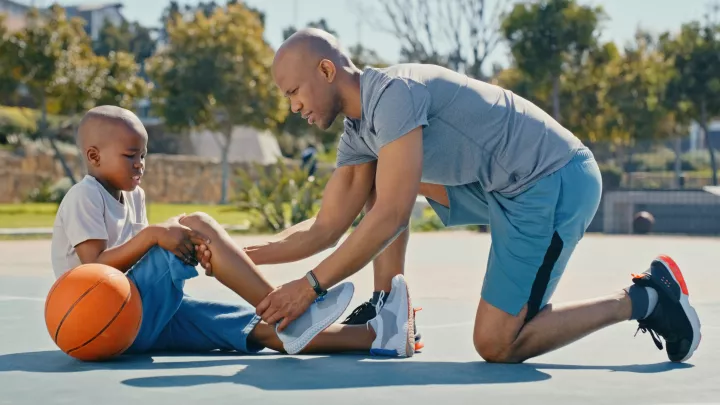Limb Disorder Treatments
It takes advanced surgical expertise and knowledge to treat limb problems like limb length discrepancies. At our Limb Lengthening and Reconstruction Program, we offer nonsurgical and surgical treatments for complex lower limb disorders.
Nonsurgical Limb Disorder Treatments
Nonsurgical treatments can provide a temporary fix prior to surgery or a permanent solution. We often combine nonsurgical and surgical treatments to get the best results. Our on-site orthotic and prosthetic specialists provide a customized fit for braces, crutches and prosthetic devices.
Nonsurgical treatments include:
- Leg braces to maintain correct foot and leg positioning.
- Prosthetic devices for missing limbs (limb deficiencies).
- Shoe inserts or lifts to equalize leg lengths.
- Stretching casts to correct soft tissue contractures.
Surgical Limb Disorder Treatments
If your child needs surgery, timing is important. We want the bone to naturally grow as much as possible, but we need to do surgery before the bone stops growing. Your child may get a lot of X-rays to monitor bone growth. We take 3D X-rays using the EOS low-radiation imaging system to minimize your child’s radiation exposure.
Surgical treatments include:
Limb lengthening
Limb lengthening procedures help children who have significant leg length discrepancies (a difference of about two inches). During surgery, your child’s doctor fractures the short bone in the affected limb. The doctor then attaches a device that slowly pulls the broken bone apart. About one millimeter of new bone forms per day (approximately the thickness of a credit card).
We use two types of limb lengthening devices:
- External frame device (fixator): We attach pins and wires to the bone through small incisions in the skin. The pins and wires attach to a metal frame with a straight rod or rings that encircle the outside of the leg. You gradually adjust the brace to pull the pins — and the bones they’re attached to — away from each other. We show you how to adjust and care for the device. We also use external fixators to treat limb deformities caused by Blount disease, birth defects and malunions (fractures that don’t heal properly).
- Internal device: For children older than 11, we use an internal limb lengthening system called Precice. During surgery, we fracture the short bone and attach magnetic nails and an expandable metal device. Afterwards, you or your child hold a programmable magnetic controller on the skin above the implanted nail. The controller activates the magnetic nail, causing the device to lengthen. The process takes about 10 minutes and may occur daily or less often, depending on doctor recommendations.
Guided growth
Instead of lengthening a limb, we perform a procedure called epiphysiodesis to stop the longer limb’s growth temporarily or permanently. This approach gives the shorter limb time to catch up.
Another procedure called hemiepiphysiodesis stops the growth of one part of a growth plate (the end of a still-growing bone). The other half of the growth plate continues to grow to correct the bone alignment.
Hip reconstruction
Some children are born with a congenital short femur (thighbone) that makes one leg shorter than the other. We perform hip reconstruction to realign the hip bones and lengthen and reposition muscles and tendons. A child may then have a limb lengthening procedure without the risk of dislocating a hip.
Knee reconstruction
Children with congenital short femur or short tibia (shinbone) may have unstable knees that dislocate during limb lengthening. We use surgery and casting to reconstruct and reposition knee ligaments, muscles and tendons prior to limb lengthening.
Foot reconstruction
We use a variety of surgical procedures to correct bone abnormalities in the foot. Some children need surgery to correct improperly treated (or untreated) clubfoot. Surgery also treats clubfoot that doesn’t respond to the Ponseti method, a nonsurgical treatment that involves stretching and casting. We also perform foot reconstruction on improperly healed bone breaks (malunions) in the ankle and foot.
Rehabilitation Services
Physical and occupational therapy are critical to your child’s recovery and treatment success. Specialists in our rehabilitation program know how to help children who are undergoing limb lengthening or reconstructive treatments. We help your child feel confident getting around on crutches and walkers. We also help them get comfortable with a limb lengthening device.


